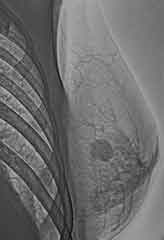Bone pain can be caused by a variety of factors, including injury, overuse, and medical conditions such as osteoporosis, osteomyelitis, and bone cancer. While conventional treatments for bone pain often involve medication and surgery, Traditional Chinese Medicine (TCM) offers a holistic approach to managing bone pain that includes the use of acupuncture, TCM herbs, and dietary therapy.
At The Tole, a TCM clinic in Kuala Lumpur, Malaysia, patients receive individualized treatment plans based on their specific needs and symptoms. The following is an overview of the TCM approach to managing bone pain.
Acupuncture
Acupuncture is a key component of TCM treatment for bone pain. It involves the insertion of fine needles into specific points on the body to stimulate the flow of energy (qi) and promote healing. Acupuncture can help to reduce pain and inflammation, improve circulation, and promote relaxation.
At The Tole, a TCM practitioner will carefully assess the patient's condition and develop an individualized acupuncture treatment plan based on their specific symptoms and needs. The number of sessions required will depend on the severity of the pain and the patient's response to treatment.
TCM Herbs
TCM herbs have been used for thousands of years to manage pain and promote healing. They work by addressing the underlying imbalances in the body that are contributing to the pain.
At The Tole, a TCM practitioner will develop a customized herbal formula based on the patient's specific symptoms and needs. The formula may include herbs such as angelica, ligusticum, and peony, which are commonly used in TCM to manage bone pain.
Dietary Therapy
Dietary therapy is an important component of TCM treatment for bone pain. It involves making dietary changes and incorporating foods that promote healing and reduce inflammation.
At The Tole, a TCM practitioner will assess the patient's diet and make recommendations for dietary changes based on their specific condition and symptoms. These may include incorporating anti-inflammatory foods such as ginger, turmeric, and leafy greens into the diet, and avoiding inflammatory foods such as processed and fried foods.
Other TCM Therapies
In addition to acupuncture, TCM herbs, and dietary therapy, there are other TCM therapies that may be helpful in managing bone pain. These include:
Tui Na: Tui Na is a form of Chinese therapeutic massage that involves the use of specific hand techniques to manipulate the muscles and soft tissues of the body. It can help to reduce pain and inflammation and promote relaxation.
Cupping: Cupping involves the use of suction cups placed on the skin to promote blood flow and reduce pain and inflammation.
Gua Sha: Gua Sha involves the use of a specialized tool to scrape the skin in a specific pattern to promote blood flow and reduce pain and inflammation.
Moxibustion: Moxibustion involves the burning of mugwort (a type of herb) near the skin to promote healing and reduce pain and inflammation.
Lifestyle Changes
In addition to TCM therapies, there are several lifestyle changes that can help to manage bone pain and promote overall health and well-being. These include:
Engaging in regular exercise: Exercise can help to strengthen the bones and muscles and reduce pain and inflammation. However, it is important to consult with a healthcare provider before starting any new exercise program, especially if you have an underlying medical condition.
Maintaining a healthy weight: Excess weight can put additional strain on the bones and joints, leading to pain and inflammation.
Getting enough rest and sleep: Rest and sleep are important for healing and reducing pain and inflammation.
Managing stress: Stress can exacerbate pain and inflammation. Engaging in stress-reducing activities such as yoga, meditation, or deep breathing can help to manage stress and promote relaxation.
Avoiding smoking and excessive alcohol consumption: Smoking and excessive alcohol consumption can worsen bone pain and slow down the healing process.
It is important to note that TCM is not a substitute for conventional medical treatment, especially in cases of severe bone pain or underlying medical conditions. TCM should be used as a complementary therapy alongside conventional treatment.
In summary, TCM offers a holistic approach to managing bone pain that includes the use of acupuncture, TCM herbs, dietary therapy, and other TCM therapies. At The Tole, a TCM practitioner will develop an individualized treatment plan based on the patient's specific symptoms and needs. Lifestyle changes such as exercise, maintaining a healthy weight, getting enough rest and sleep, managing stress, and avoiding smoking and excessive alcohol consumption can also help to manage bone pain and promote overall health and well-being. At The Tole, patients with bone pain can expect a comprehensive assessment, including a review of their medical history, physical examination, and diagnostic testing if necessary. Based on this assessment, a customized treatment plan will be developed that may include a combination of TCM therapies

